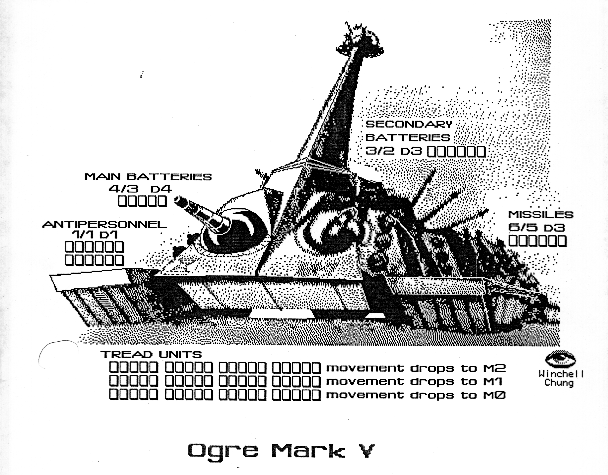The tank is dead! Long live the tank!

Older nerds will perk up their ears at the sound of Steve Jackson games, and the hardest of the hardcore will recognize the name Ogre as a classic in the small format tabletop wargaming genre.
Tank: Present, Future, Ogre… was published in 1977 by Charles R. Bowles.
Hang wringing over the imminent demise of the tank is not new.
This old article has proven to be shockingly prescient.
It is particularly interesting to consider this article in light of the recent development of Russian “turtle tanks”, or, “blyatbarns”, standard main battle tanks with large amounts of spaced “armor” welded onto the turret and hull of the tank (sometimes rendering the turret incapable of pivoting), often with lots of electronic warfare (jamming) equipment attached haphazardly on top, and sometimes with mine rollers/plows.
Indeed, the demise of the close support attack helicopter has been resoundingly accurate, and, judging from OSINT sources, the most common use of both side’s “tank buster” attack helicopters (Ka-52s and others from Russia, Mi-24s from Ukraine) has been to lob rockets on a ballistic trajectory, essentially a mobile tube artillery, which is a far cry from the original tasks these expensive pieces of equipment were envisioned for. The most common CAS airframe, the Su-25 Frogfoot has also been increasingly pressed into this unexpectedly dimuninitve role as (highly) mobile tube artillery, and even Russia’s vaunted Su-34s and similar strike aircraft has been forced to operate far out of range of Ukranian air defense, lobbing glide bombs at targets over Russian soil to take advantage of political armor (Ukranian air defense tools supplied by allied countries are restricted for use on Ukranian territory unfortunately), or otherwise as launch platforms for cruise missles over the Black Sea, also well out of the range of either Soviet or Western air defense platforms.
Hand wringing about IFF is noteworthy. In the Cold War scenario, IFF would still have been relatively simple, as NATO and Warsaw Pact both would have had fairly standard procedures. In the post-Cold War world however, the mix of irregular and non-state forces in conflict zones only increases these problems. Exhibit A is this network graph of alliances/hostilities between armed factions in the Syrian civil war. Exhibit B is of course, the initial invasion of Ukraine in 2014, with a mishmash of Putin’s “little green men”, and DPR/LPR forces.
The confidence in digital systems to replace crew, however, has been much less successful than the writer imagined. As self-driving car development has shown, getting fully automated systems to work well in well regulated, non-combat scenarios has been difficult, to say the least. While (for better or for worse), AI will have a role to play in the future battlefield, and likely already is (Ukranian and presumably Russian FPV suicide drones, which are vulnerable to jamming, seem to have been fitted with experimental “last mile” AI systems that can guide the drone to the final target), it does not seem that fully automated tanks will arrive anytime soon. More likely is increasing automation of various auxiliary tasks, or new tasks being added to tanks which are already entirely automated (such as active protection systems). Tanks, especially ones with high performance engines and other features (such as the Abrams) need a lot of human support for maintenance and repair, if they are expected to be in the field for any significant length of time. Far more likely are drone systems, with AI backup to take temporary command in case of jamming.
Thankfully, the Cold War era fascination with tactical nuclear weapons has not come to pass.